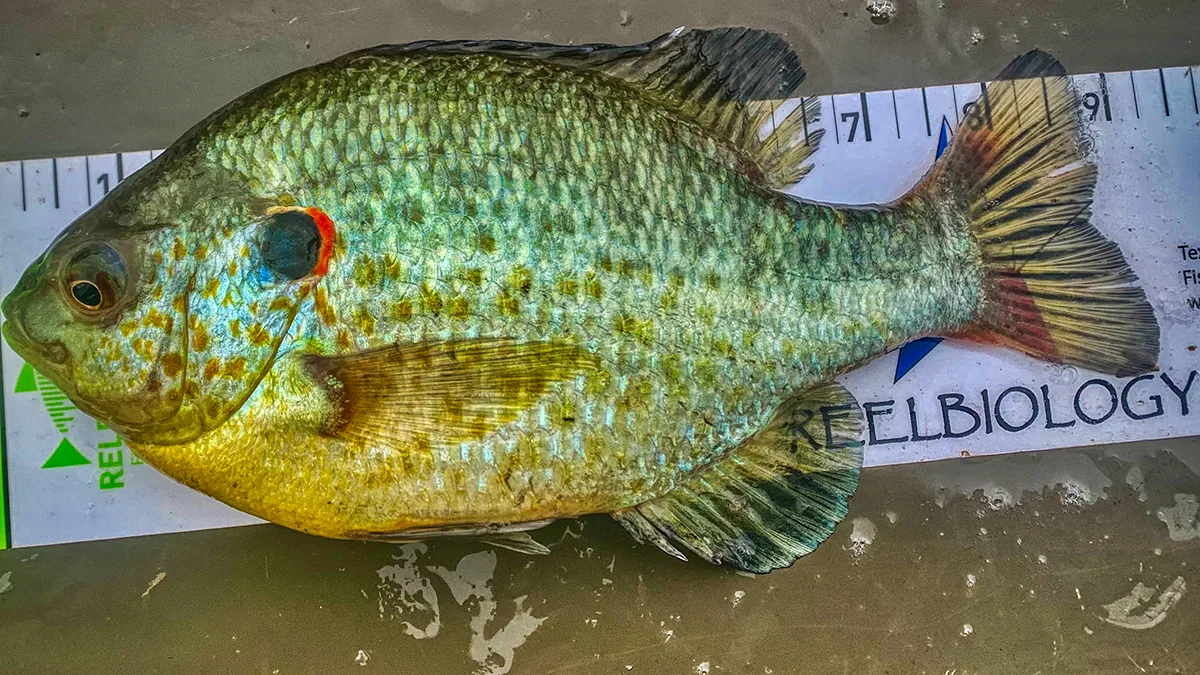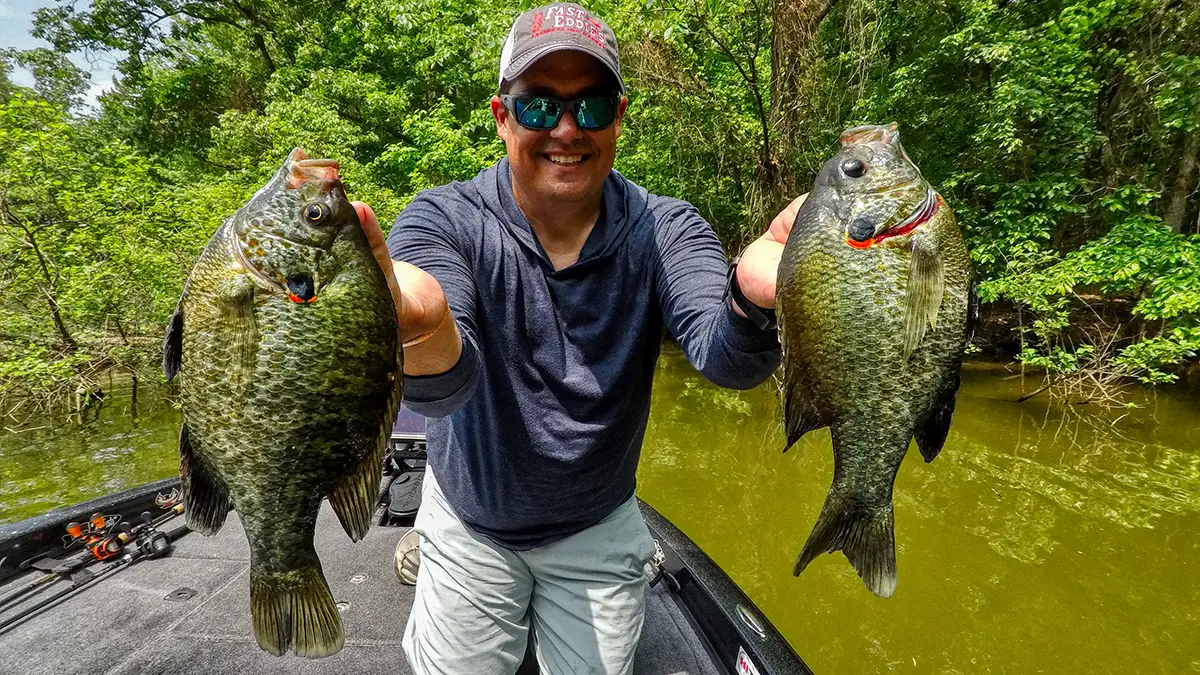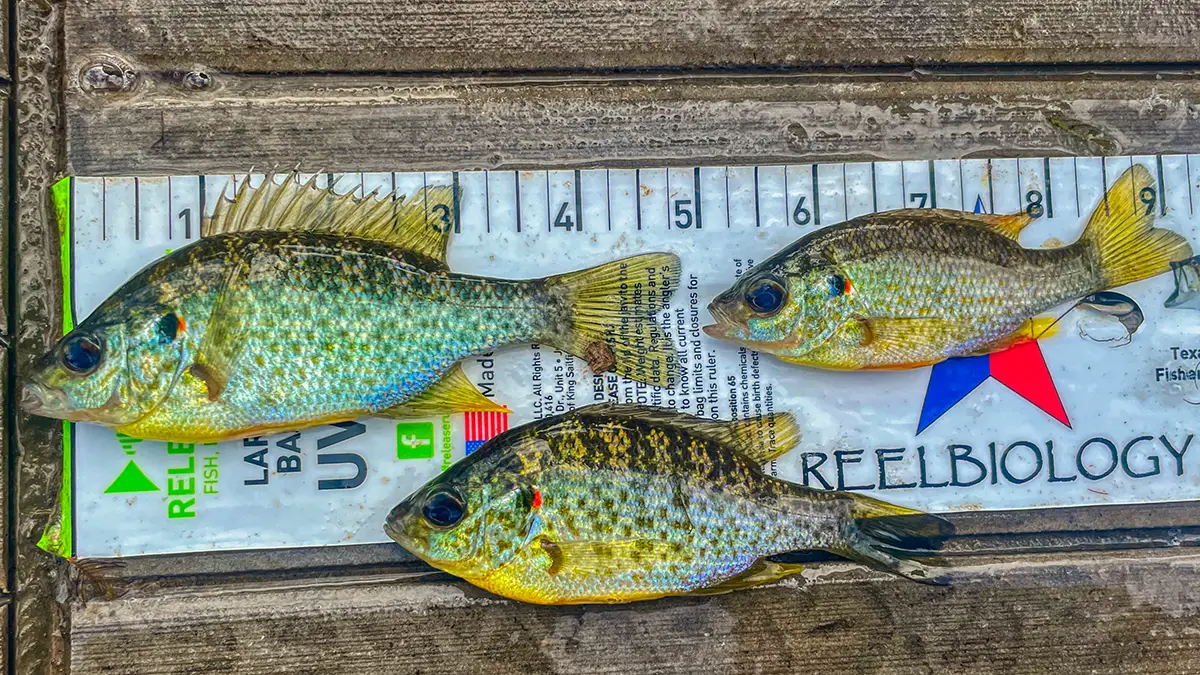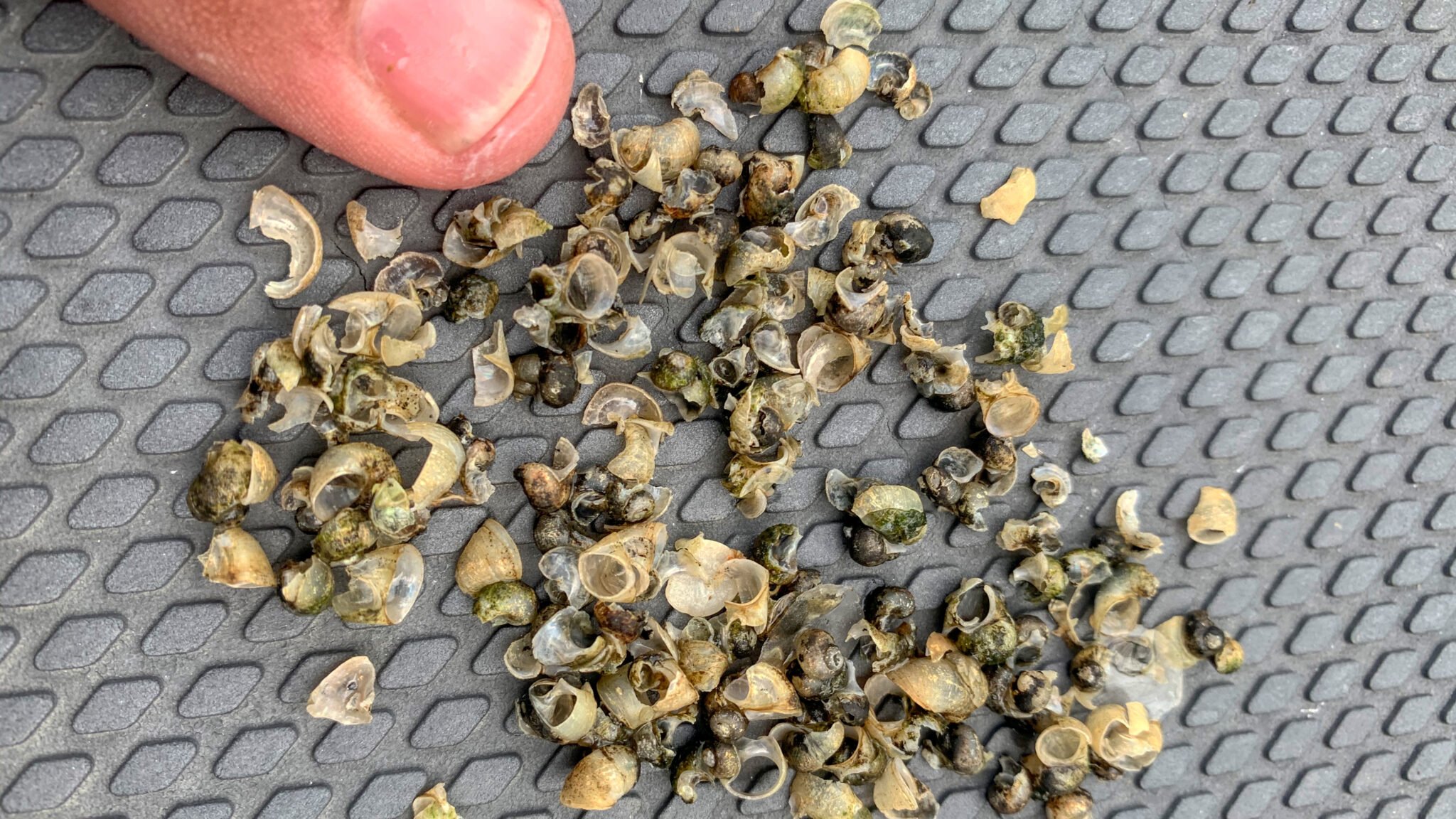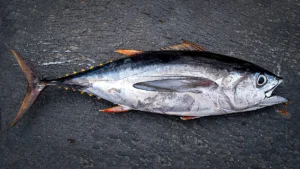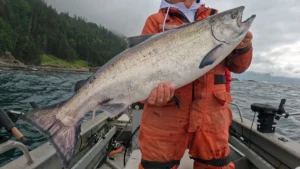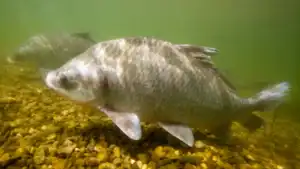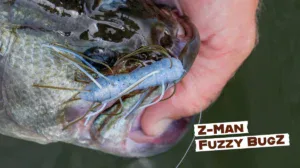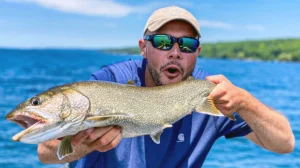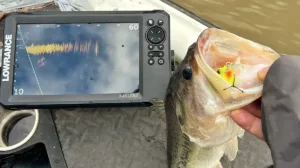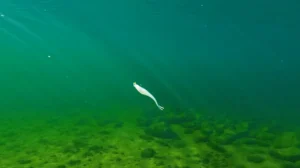Redear Sunfish are a delicious panfish that hit world fame in 2021 when the world record redear 6-pound, 4-ounce fish was caught out of Lake Havasu. Since that time every sunfish angler has dreamed of a trip west to chase monster shellcrackers. But do you know why they have the nickname shellcracker or that the males make a popping sound to trigger females to drop eggs? If these facts are news to you, this species profile will likely prove to be a valuable resource for you.
Redear Sunfish History
Redear Sunfish (Lepomis microlophus) belongs to the Centrarchidae family, which includes black crappie, bluegill sunfish, green sunfish, and largemouth bass and the Lepomis genus which include the 13 acknowledged sunfish species. Redear are commonly referred to as perch; however, true perch are species such as walleye, darters, and yellow perch are found in the Percidae family.
Redear sunfish were first described by Albert Karl Ludwing Gotthilf Gunther in 1859. Gunther first wrote about redear sunfish in Catalogue of the Acanthopterygian Fishes in the Collection of the British Museum. The specimen observed by Gunther was from the St. Johns River in Florida. The scientific name he gave the Redear Sunfish was Lepomis microlophus. Lepomis is Greek for scaled gill cover or scaled cover and microlophus is Greek for small nape.
The redear sunfish has several common names, including shellcracker, cherry gill, sun perch, Georgia bream, stump knocker, chinquapin, and sun perch.
Redear Identification
Sunfish in general are often misidentified by anglers due to their small size, ability to hybridize, and similarity of physical features among the Lepomis genus. When identifying any sunfish species you can start with our sunfish identification guide and the mouth size compared to the body size, opercular flap length, margin color, and flexibility, and pectoral fin length.
Redear sunfish get their name from the margin color found on the outer edge of the opercular flap on the gill covering. This color, you guessed it, is red and can slightly vary from a light orange as juveniles and will develop into a much more prominent red color as the fish matures. Green sunfish, warmouth, and pumpkinseed sunfish can have orange to red collaboration on their opercular margins but it will be combined with white margin areas as well.
The opercular itself for redear sunfish will be stiff and not elongated. The pectoral fins of redear are elongated with the tips of the fins ending in a knife shaped point. The pectoral fins will be light in color with 13 to 14 rays. The first and second dorsal fins are connected. The spiny dorsal section has 6 to 13 spines and the soft dorsal fin section has 10 to 12 rays.
The sides of the redear sunfish will be silver to brown with pale spotting. Spotting will continue onto the cheeks of the fish. The back coloration will typically be darker black to brown and the breast area will be white to yellow. Immature or juvenile redear will have spotted sides that align to create vertical barring and have a highly visible lateral line, while adult males will be darker in coloration with black coloration on the head, breast and pelvic fin areas during spawning.
The redear sunfish will have a slightly elongated snout and a small terminal protruding mouth. Pectoral fins can be folded forward to tough the edges of the mouth. Green sunfish and warmouth will have mouths that are much larger proportional to their body size compared to that of the redear sunfish.
Readear Sunfish Location
The native range of the redear sunfish was historically limited to the United States with the majority of fish being found from the Atlantic coast down into the Florida peninsula. To the west the redear sunfish could be found along the Gulf coast into Texas. They had broad distribution throughout the Mississippi river drainage area and as far north as Indiana and Illinois.
Today through expanded stocking efforts and their popularity as parasite control in small impoundments they are found throughout the United States and commercially available from private fish hatcheries. Redear populations outside of the US have been established in Morocco, Panama, and Puerto Rico.
To see the current and historic distribution of redear sunfish, view the interactive map above.
Redear Sunfish Spawning
Redear sunfish will have a major spawn in the warmer months, usually late spring to early summer, when temperatures reach 70℉ to 89℉. Like many sunfish species, redear are nest guarding community spawners. But unlike other sunfish, the redear prefers to spawn in slightly deeper waters with depths of 3 to 6 feet.
Male redear sunfish create round or saucer shaped depression nests, selecting sites with hard substrate and fanning out fine sediment using their tail to expose gravel. Redear sunfish will spawn in the same area, making the spawning beds close together in a community. One area could have four to twenty beds depending on the population density.
Once the nest is built, the male redear sunfish will attract a female, and they will both begin to circle the nest. The male will make a popping sound to trigger females to release their eggs. The eggs are tiny and highly adhesive. They immediately stick to the sediment. A single female can produce 2,000 to 80,000 eggs per spawning season but drop 2,000 to 10,000 in each spawning attempt. The female will leave the nest shortly after spawning and will continue to another male’s nest to spawn again.
The male will stay with the nest protecting the eggs and periodically fanning them using their tails to remove sediment and provide oxygen. The incubation period takes six to tens days, depending on the water temperature.
The redear sunfish will occasionally spawn with bluegill sunfish, so it is not rare to see natural hybrids.
Redear Sunfish Size and Lifespan
Fry will feed on the yolk sac of the egg for around 3 days. Once the yolk sacs have been used, the fry will swim out of the nest and disperse into vegetation. The fry will feed on zooplankton, growing quickly. As they advance in size, redear sunfish will begin consuming small mollusk and insect larvae.
Growth will be highly dependent on temperature and forage availability. As a general rule, redear found in the southern US will grow more quickly than those found in the northern reaches of their range. As a general rule, the first year growth will be 2 to 4 inches followed by an additional inch of growth annually. In the southern US first year growth rates of 6 inches can be accomplished.
Maturity can occur in the fall of the first year for male redear in the southern states but is more common at year two or beyond for northern states and females. The typical life expectancy is 5 to 6 years with 9 years being the oldest reported in scientific literature.
Redear Sunfish Habitat
Redear sunfish favor waterbodies with relatively clear water and aquatic vegetation. Due to diet preferences they will typically be found lower in the water column and around hard surfaces. They spend the majority of their lives within the littoral zone of a fishery, venturing out into deep water primarily during winter months. Juveniles rarely leave the shelter of aquatic vegetation in the littoral zone. Defining the littoral zone, understanding substrate hardness, and locating hard surface structures like stumps and dock pillars can be the key to finding feeding redear sunfish.
Redear are fairly tolerant of lower dissolved oxygen, higher salinity up to 4 ppt, and can even be found in brackish environments.
Redear Sunfish Diet
Redear typically feed during the day and are considered opportunistic sight feeders. Their growth rates will be much higher in clear water compared to turbid water. Juvenile redear will graze on aquatic invertebrates around submerged plants and crustaceans around rocks or wood. As redear increase in size, they will begin to prefer mollusks including snails. They will grab them off of plants, substrate, and structure.
Their ability to crush the shell of crustaceans is due to an enlarged pharyngeal jaw and additional musculature. Once a snail is grabbed in the mouth the redear crushes the shell and separates the majority of the shell from the meat of the snail. The shell pieces are expelled from the mouth.
The preference of the redear to consume small mollusks has been utilized by pond and reservoir managers to attempt to eliminate snail vector parasites from fish communities. This created a market for millions of redear sunfish to be produced and stocked each year. Additionally there is some evidence that in lakes like Lake Havasu, that redear sunfish will consume quagga mussels, a non native species similar to zebra mussels with slightly rounder shells.
Redear Sunfish Threat
At this time there are no threats to redear sunfish populations throughout the US. In extremely large snail producing areas and ponds, hybridization with bluegill sunfish and limited annual reproduction creates the necessity for reintroduction of redear to maintain parasite control.
Redear Sunfish Fact You Need To Know
- The World Record Redear Sunfish was caught on Lake Havasu in Arizona by Thomas Farchione, weighing 6 pounds and 4 ounces and was 17 inches long.
- The Missouri state record all fishing gear redear sunfish record was broken in 2022 via bow fishing.

